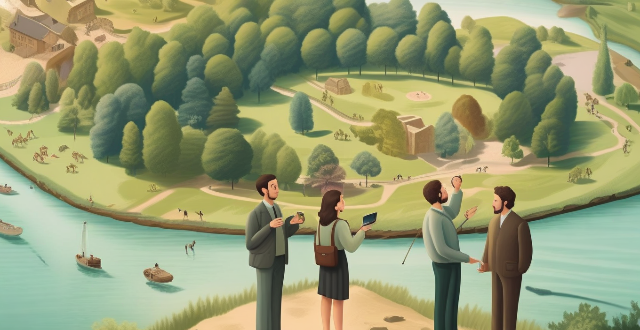Local communities play a crucial role in the protection and interpretation of cultural sites. They possess traditional knowledge and skills, oral histories, and maintenance efforts that are vital for preserving cultural heritage. Additionally, they enhance visitor experiences through guided tours, cultural events, and interpretive signage. Local communities also advocate for cultural sites by lobbying for protection, educating the public, and collaborating with researchers. By involving local communities in conservation efforts, we not only protect cultural sites but also celebrate the diversity of human heritage.

The Role of Local Communities in the Protection and Interpretation of Cultural Sites
Local communities play a crucial role in the protection and interpretation of cultural sites. They are the stewards of their heritage, and their involvement is essential for the preservation and understanding of these sites. This essay will discuss the various ways in which local communities contribute to the conservation and interpretation of cultural sites.
1. Preserving Cultural Heritage
a. Traditional Knowledge and Skills
Local communities possess traditional knowledge and skills that are vital for the preservation of cultural heritage. They have a deep understanding of the materials used in the construction of cultural sites, as well as the techniques required for their maintenance and repair. For example, indigenous communities in South America have been using natural dyes and fibers to create textiles for centuries, and this knowledge is crucial for the conservation of ancient textiles found at archaeological sites.
b. Oral Histories and Legends
Oral histories and legends passed down through generations within local communities can provide valuable insights into the significance and meaning of cultural sites. These stories often contain information about the site's history, its original purpose, and its relationship to the surrounding landscape. By sharing these stories with visitors, local communities help to interpret the cultural significance of the site.
c. Maintenance and Repair
Local communities often take on the responsibility of maintaining and repairing cultural sites. They may organize regular cleaning sessions, remove debris, and carry out minor repairs to ensure the site remains intact. In some cases, they may also be involved in more extensive restoration projects, working alongside professional conservators to preserve the site's integrity.
2. Enhancing Visitor Experiences
a. Guided Tours and Explanations
Local communities can offer guided tours of cultural sites, providing visitors with unique insights into the site's history and significance. They can share personal anecdotes, explain local customs and traditions, and answer questions from visitors. This interaction not only enriches the visitor's experience but also helps to foster a sense of connection between the community and the cultural site.
b. Cultural Events and Festivals
Local communities often organize cultural events and festivals at cultural sites, showcasing traditional music, dance, crafts, and cuisine. These events not only celebrate the site's heritage but also provide visitors with an opportunity to engage with the local culture directly. By participating in these activities, visitors gain a deeper appreciation for the site's cultural significance.
c. Interpretive Signage and Exhibits
Local communities can work with museum curators and park managers to develop interpretive signage and exhibits that accurately convey the site's cultural significance. They can contribute their knowledge and expertise to ensure that the information presented is accurate and respectful of their heritage. This collaboration helps to create a more comprehensive and nuanced understanding of the site for visitors.
3. Advocating for Cultural Sites
a. Lobbying for Protection
Local communities often serve as advocates for cultural sites, lobbying government agencies and other organizations for their protection and preservation. They may organize petitions, attend public meetings, or even take legal action to prevent development projects that could threaten the site's integrity. Their efforts help to ensure that cultural sites are recognized as valuable resources worthy of protection.
b. Educating the Public
Local communities play a vital role in educating the public about the importance of cultural sites. They may organize workshops, lectures, and exhibitions to raise awareness about the site's history, significance, and current challenges. By spreading knowledge about cultural sites, they help to build a broader constituency of supporters who can advocate for their protection.
c. Collaborating with Researchers
Local communities often collaborate with researchers studying cultural sites, providing access to their knowledge and resources. This partnership allows researchers to gain a deeper understanding of the site's history and significance, which can inform conservation efforts and interpretation strategies. Additionally, by participating in research projects, local communities can help to ensure that their perspectives are represented in academic publications and reports.
In conclusion, local communities are integral to the protection and interpretation of cultural sites. Their traditional knowledge, oral histories, maintenance efforts, visitor experiences, advocacy work, and collaboration with researchers all contribute to the preservation and understanding of these valuable resources. By involving local communities in conservation efforts, we not only protect cultural sites but also celebrate the diversity of human heritage.